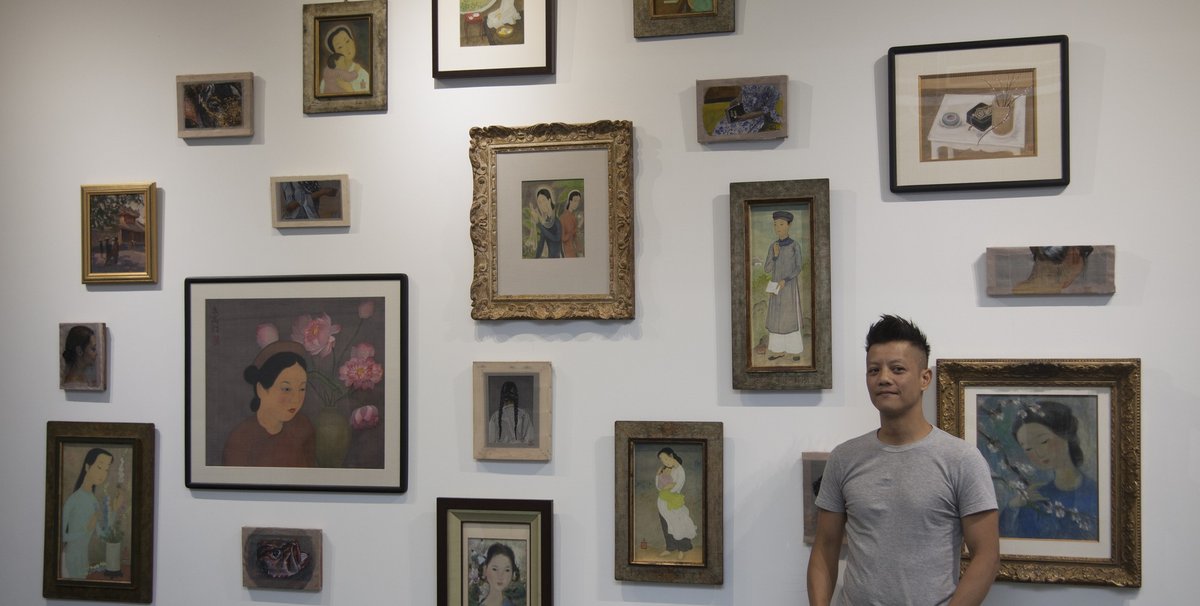The relationships shaping Vietnam’s society and art get an airing in Departures, an exhibition that opened last Friday (until July 8) at de Sarthe Gallery Hong Kong. Ho Chi Minh City-based Vietnamese-American artist Richard Streitmatter-Tran created new works engaging with 40 pieces by Modern Vietnamese masters and their Western mentors to explore the artistic interplays between Vietnam and the West as well as the country’s past and present and Modern and contemporary art.
The show reaches back to the origins of Vietnamese Modern art at Hanoi’s Ecole des Beaux-arts d’Indochine, says de Sarthe Gallery Hong Kong director Willem Molesworth. “For the Modern artists, a school [was] founded by this French painter Victor Tardieu, in 1925. He had a huge influence on the artists in this show,” as their “professor and their first real interaction with Western art. He heavily influenced them to the point that eventually most of them moved to France and many of them never came back to Vietnam.” Featuring Tardieu and his colleague Évariste Jonchère alongside their protégés like Nguyen Phan Chanh, Vu Cao Dam, and Le Thi Luu, “the show’s focus is [less] on the intersection between Vietnam and the West [than] these departures, these travels, these exchanges that happened in several different directions and the impact of that.”
"With Modern Vietnamese artists it’s from the East to the West, while in my case, even though being born in the East, I was raised in the West and came back, so it’s about these directions,” adds Streitmatter-Tran, who moved back to Vietnam in 2003. He refers to the French school’s influence and the demons of colonialism with The Gates of Hell (Cổng Địa Ngục), an iron structure in the French-Vietnamese art deco style declaring École Supérieure des Beaux Arts and Indo Chine in French and The Gates of Hell in Vietnamese. A more Modern context is presented with The Thin Black Line, four posts attached with French-era phonographs plus the wartime speakers that are still used for broadcasting propaganda, but here playing instead compositions by the experimental musician Nhung Nguyen.
While Modern Vietnamese art garners attention for its auction prices, says Molesworth, its historical and academic importance remains less appreciated. “If you are going to university in Vietnam, art history isn’t one of the strong points,” says Streitmatter-Tran, with the emphasis placed rather on craftsmanship. Vietnam’s artists today “are still trying to find their own relations as artist or people involved in art communities to the art world in general which is quite diverse.”



